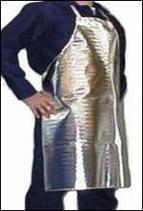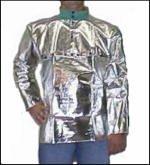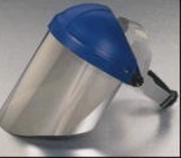Health & Safety:
Heat and Infrared Radiation
Updated 7/24/2020
Sources of Heat:
- Hot work with a kiln (combing)
- Torch
- Glory Hole
- Furnace
Heat Illness can start when temperatures get above 80 degrees! High humidity can make things worse!
What problems can be caused by excessive heat?
- Heat Cramps: Cramping of muscles and stomach. Caused by heat and electrolyte deficiency
- Heat Stress: Profuse sweating, dizziness, fatigue.
- Heat Exhaustion: No sweating (thermoregulatory system shuts down), possibly fatal! Seek medical assistance immediately!
How do you prevent Heat Illness?
- Stay properly hydrated
- Drinks lots of water
- Maintain electrolyte balance (there are electrolyte replacement fluids such as Gatorade)
- Maintain proper diet
- Avoid Alcohol – Dehydrates the body
- Get plenty of rest
- Allow plenty of breaks in a cool area!
- Do NOT use salt pills!
Acclimatization
If you are going to be working in a hot environment for several weeks, start slow and give your body time to get used to the heat. Use Common Sense! Do you really have to blow glass in your studio in Florida in the summer????????
How to protect yourself working around an open kiln:
- Follow the heat illness guidelines
- Wear reflective (aluminized) garments
- Wear a face shield
- Wear eye protection



For non-ionizing radiation, Infrared (IR) is the frequency of most concern to kiln glass artists.
- Occurs whenever there is radiant heat (glowing)
- Eyes are most affected
- IR is absorbed by iris, cornea, lens
- Can result in: “Dry Eye” or “Glassblower’s Cataracts” with high, long term exposure
- Goal is to minimize IR transmission
Protection:
Wear appropriate protective lenses. ANSI (American National Standards Institute) has standard shades for blocking IR and visible light transmission:

Remember – the goal is to minimize IR transmission, so the LESS the IR transmission, the better. However there is a trade-off. Decreased IR transmission means decreased visible light transmission so the more protection you get, the harder it will be to see through them.
Basic Rules for Infrared Radiation Exposure:
- A periodic “peek” in the kiln is not a problem
- The main exposure risk is viewing > 1 minute at a time
- Wear appropriate protective lenses if you are going to be looking at molten glass for more than one minute.
